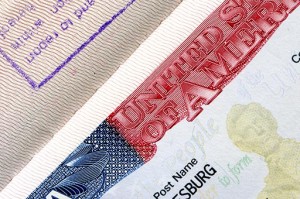Australian Student Visa
Overview
 Foreign citizens who intend to study in Australia need to apply for a Student Visa in order to be allowed to study in the country.
Foreign citizens who intend to study in Australia need to apply for a Student Visa in order to be allowed to study in the country.
In order for the student visa to be approved, the course which the applicant plans to take must be registered with the Australian government as an official curriculum provided for overseas students. The educational institution offering the said course must likewise be duly accredited by the Australian government.
Letter of offer
Accordingly, the applicant must also show proof that he has been accepted by these institutions. This fact can officially be verified by the presentation of the “Letter of Offer,” the official document issued by the accredited institution certifying that the applicant possesses all the qualifications and none of the disqualifications for enrolment in their school.
There are several advantages awaiting the applicant once his student visa is approved. Once granted, the foreign student can be allowed to work part time in Australia, as long as said employment does not interfere with his studies.
The foreign student can now also be allowed to avail of the government’s subsidized student health cover. He may also bring his family with him, depending on the Assessment Level of his country of origin (Assessment Level is discussed below)
For courses under three months, a student visa is not necessary. In this case, it is sufficient that the enrollee is a holder of a visitor visa or a working visa, and there is no requirement to convert the same into a student visa
Sponsored Student
If the expenses of the applicant will be taken care of by a sponsor, another important aspect which must be shown by the applicant is the financial ability of his patron to cover his expenses upon entry in Australia.
The sponsor must furnish documentary evidence of his cash assets, as well as other properties which will serve as proof that he has such financial capacity.
Said assets must have been held by, and in the possession of the sponsor at least three (3) months before the application date of the visa.
What are assessment levels?
Under Australian immigration laws, every country all over the world is assigned an assessment level (AL). An assessment level is a point of reference created by Australia, based on studies it conducted to determine the immigration risks posed by the students of each particular country.
This point of reference serves as basis of immigration officials in determining the degree of evidence which must be submitted by a student visa applicant. Thus, in a way, the AL serves as basis of the immigration official whether to approve or deny an application for temporary stay to study in Australia.
Thus, if the students of a specific country tend to abide with the visa conditions set forth by the Australian government, the corresponding Assessment Level of that country is lowered. Accordingly, the degree of evidence which must be submitted by applicants from this country is likewise lowered. Visa processing, therefore is reduced.
The higher the Assessment Level of a country, the higher the degree of evidence which must be submitted by the applicant from that country. Visa processing is therefore prolonged.
To determine the assessment level of every country in the world, the Australian government conducts a regular study of the level of immigration risks of the education sector of the countries. Consequently, if the level of immigration risks for the education sector of a particular country is high, then it is assigned a high Assessment Level.
The amount of evidence which must be submitted by a student visa applicant is determined by the passport he carries. If the country possesses an assessment level of 1, visa processing is fast since the amount of evidence which must be submitted by the applicant is lesser.
The highest assessment level which may be given to a country is 4. In this case, visa processing will be very slow since there are a lot of requirements which the applicant will have to comply with before his application may be approved.
Assessment Level of the Philippines
In the Philippines, the Assessment Level, as determined by the Australian government for purposes of determining the amount of evidence which must be submitted is as follows:
If the applicant is enrolling in a regular school in Australia, the Assessment Level is “2”
If the applicant plans to enroll in Vocational Educational and Training in Australia, Assessment Level is “3”
For Higher Education, Assessment Level is “2”
For Post-Graduate Research, Assessment Level is “1”
For Non-Award, Assessment level is “2”
For AusAID or Defence, Assessment Level is “2”
Student may bring family with him
Most student visas allow the student to bring their family members with them as dependents.
For “student visa” holders of countries with an assessment level of 1 or 2, there are no additional requirements if the holder takes his family with him.
For “student visa” holders of countries with an assessment level of 3 or 4, the course he enrolled in must be longer than twelve (12) months, or he must have been in Australia for a period of twelve (12) months or more, to be eligible to bring his family with him
